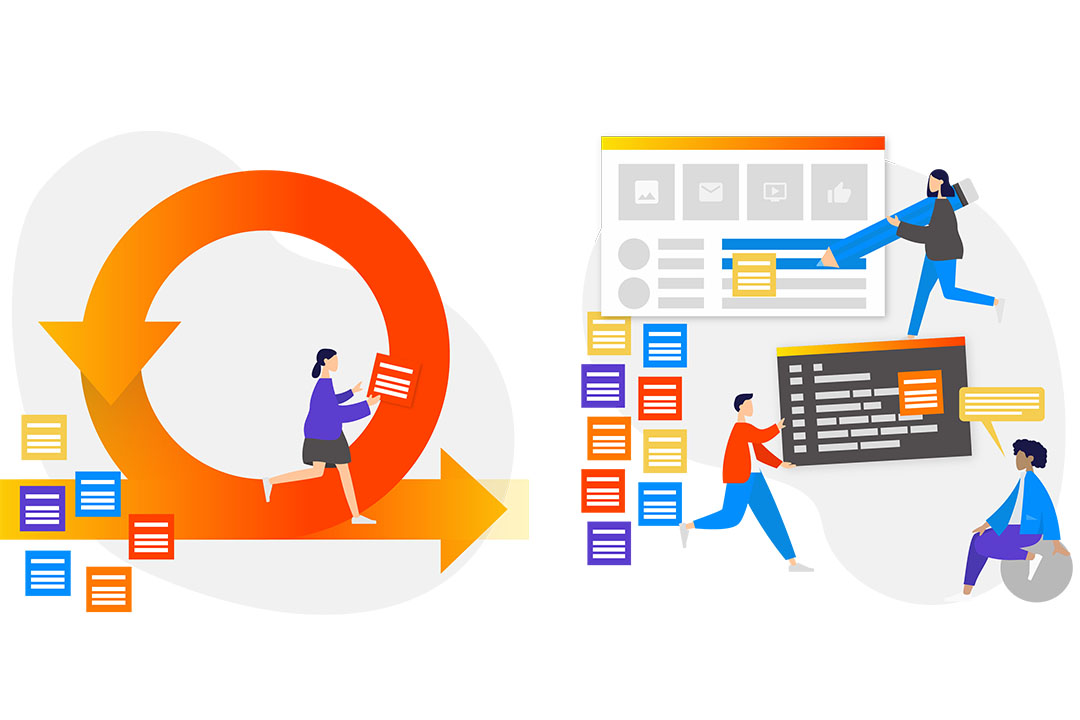Explore the key advantages of agile software development, including enhanced flexibility, improved quality, and increased customer satisfaction.
The many advantages of taking an agile approach to software development has established it as a preferred choice for software teams seeking efficiency and adaptability. It is especially beneficial for teams that are looking for a project management methodology that has a capacity for rapid adaptation and high-quality software delivery.
Agile development methodologies provide a robust framework and practical techniques that support these needs, emphasising continuous enhancement, adaptability, and a strong focus on customer satisfaction.
Agile Software Development
What is Agile?
Agile software development is a methodology that supports continuous iteration in development and testing throughout the project lifecycle. This approach contrasts sharply with the traditional waterfall model, which is more linear and structured, often leading to rigid project flows and less adaptability to change. Instead, agile breaks the project into smaller, manageable units known as sprints, enabling a more flexible and adaptive approach.
Overview of Agile Methodology
Agile software development can encompass a range of methodologies that adhere to a shared set of values and practices. These methodologies include well-known frameworks like Scrum(external link), Kanban(external link), and Lean(external link), each supporting the core principles outlined in the Agile Manifesto(external link). This manifesto prioritises individual and team interactions, operational software, customer collaboration, and the flexibility to adapt to change over rigid planning and documentation.
Agile Software Development
This approach allows teams to tackle unpredictability through short work phases and frequent reassessment. Key to agile's methodology is delivering functional and usable software at each stage of development, culminating in a product that is refined and ready for market at the conclusion of each iteration.

Advantages of Agile Software Development
Transparency and Collaboration with Clients
Transparency and a high level of collaboration with clients is a defining advantage of agile software development. This methodology encourages frequent communication and continuous feedback, integrating clients closely into the development process.
For example, the client and software team hold quick daily stand-ups to share what progress they made the previous day and what they are planning on accomplishing going forward. These updates keep the client informed of the progress of the sprint and keep the software team on track.
Such consistent engagement helps ensure that the final product accurately reflects client expectations and meets their needs, eliminating surprises upon project completion.
Early and Improved Project Predictable Delivery
Agile software development enhances the predictability and timeliness of project delivery. By segmenting projects into smaller, more manageable parts, issues can be identified and addressed early on, minimising their impact on the delivery timeline. This method enhances overall efficiency and provides stakeholders with visible, incremental progress, building confidence and trust in the development process.
Flexibility
Because of the iterative nature of an agile approach to software development it allows teams to make adjustments to the project without significant setbacks. Changes in business needs or shifts in market conditions can be accommodated swiftly (within reason), ensuring that the development process remains aligned with current objectives and that the final product serves its intended market effectively.
Continuous Improvement
Teams regularly evaluate their processes and outcomes, aiming to refine and improve their methods through retrospection. This not only elevates the quality and effectiveness of the software but also enhances the team's overall productivity and responsiveness.
Focus on End Users
Agile methodologies prioritise end-user needs by employing user stories and business-focused criteria to define product features. This user-centric approach ensures that the software not only functions well but also aligns closely with user requirements, improving user experience and satisfaction.
It cannot be stressed enough that agile is an iterative methodology and once a product has launched it is not actually “completed”. Often, once a product is launched a client will schedule time with the project team to build in new features, fix any bugs that have been found and make improvements to the existing product that are directly related to customer feedback.
Business Objectives
The client and product team work closely together before the project kicks off to outline as clearly as possible what the business objectives are for the project. This alignment ensures that each feature developed delivers substantial business value, prioritising features based on their potential impact. Agile's strategic focus supports businesses in achieving their goals through effective and targeted software solutions.
Conclusion
By adopting agile practices, companies can enhance their development processes and more effectively meet their customers' needs. Agile's ability to evolve with the shifting demands of the tech industry continually refines both the process and the products it produces, ensuring that businesses can keep pace with changes and capitalise on new opportunities as they arise.




